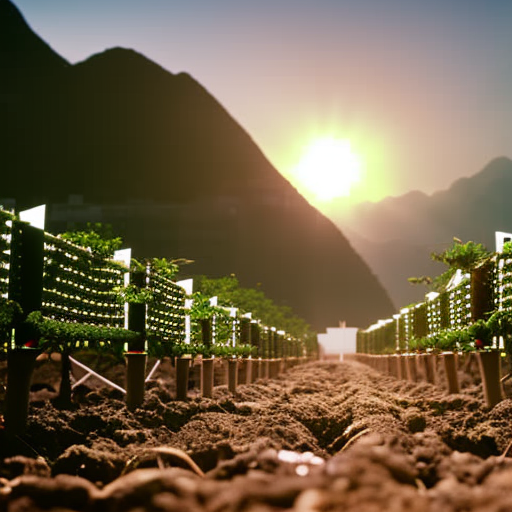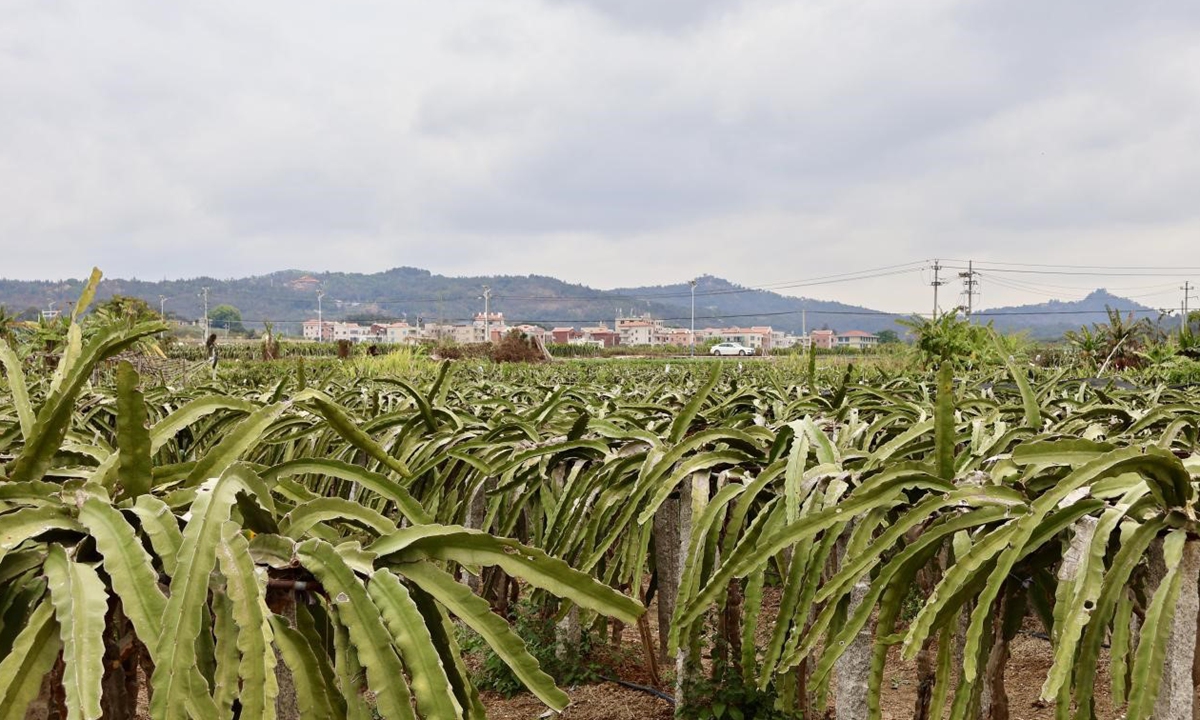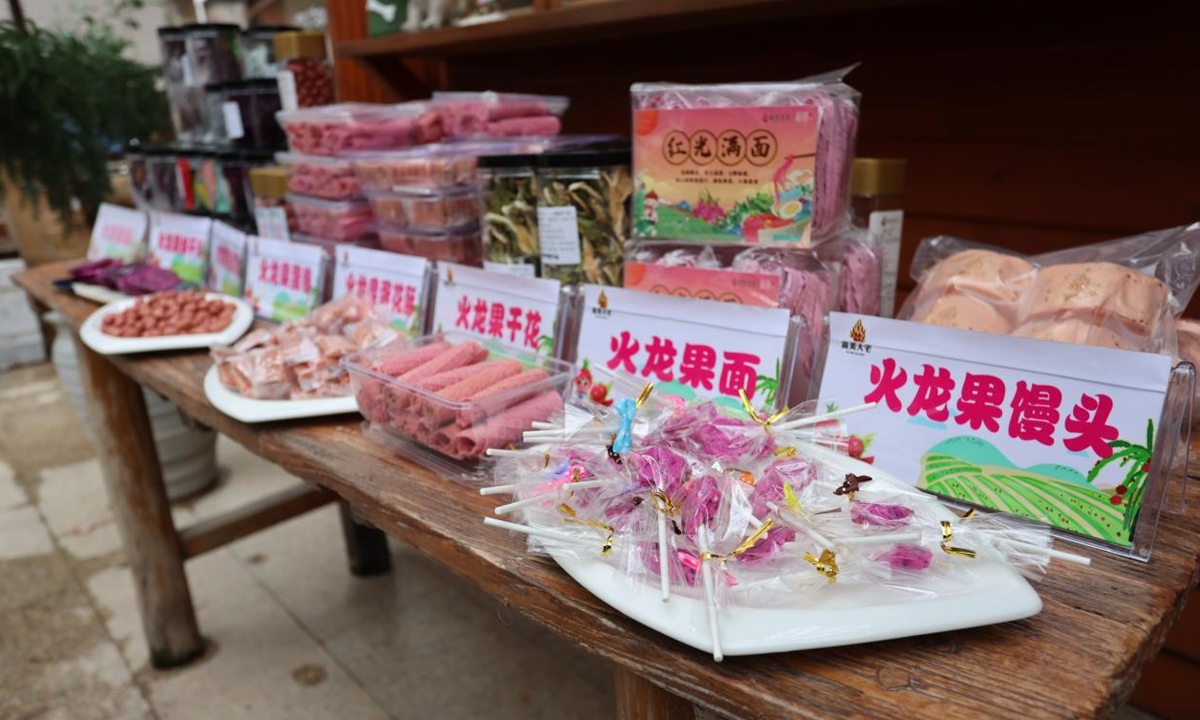
Achieving Sustainable Development Goals in Xiamen’s Dazhai Village

A view of Dazhai village fire dragon fruit planting base in Xiamen, East China’s Fujian Province. Photo: Lin Xiaoyi/GT

Dragon fruit derivatives produced in Dazhai Village. Photo: Chen Bo
Introduction
Located in Xiang’an District, Xiamen, East China’s Fujian Province, Dazhai Village showcases the success of sustainable development and the achievement of the Sustainable Development Goals (SDGs). Despite being a relatively dry and water-deficient area, Dazhai has implemented innovative solutions to address water scarcity and improve the living conditions of rural residents.
Rural Sewage Treatment
Xiamen has taken on rural sewage treatment as a crucial livelihood project, pioneering the modern and systematic treatment of rural domestic sewage, agricultural irrigation water, and canal and pond water in Fujian Province. By intercepting sewage at its source, including from rural toilets, kitchens, and washing sinks, the wastewater is reused through secondary treatment. This initiative has achieved zero sewage discharge and significantly enhanced the quality of life for rural residents.
Intelligent Irrigation System
Dazhai Village, known for its dragon fruit and carrot cultivation industry, has implemented an intelligent drip irrigation system to address the high demand for crop irrigation. The village has built a rain and sewage diversion pipe system, water supply pipelines, field main pipes, branch pipes, and variable frequency booster pump stations. Farmers can conveniently access water through card swiping or mobile apps, providing efficient drip irrigation to the orchards.
Smart Drainage Management
The drainage management system in Xiang’an District has become increasingly “smart.” The implementation of the “one household, one water pipe layout, and one code” system allows residents to report drainage issues by scanning a QR code on their cellphones. The big data platform analyzes the reports and automatically distributes them for processing, ensuring efficient and timely resolution of drainage problems.
Environmental Impact and Rural Development
The extensive construction and application of decentralized rural sewage treatment plants, classified collection networks, and intelligent management platforms have greatly improved the living environment in Dazhai Village. This has not only promoted the development of rural tourism and leisure agriculture but also led to the full utilization of ecological resources in the dragon fruit industry. Dazhai Village has developed various dragon fruit derivatives, including dragon fruit wine and dragon fruit noodles.
Conclusion
Through the successful implementation of sustainable development initiatives, Dazhai Village has achieved zero discharge of sewage, improved water quality in surrounding areas, and enhanced the overall rural scenery. The efforts in Dazhai Village serve as a model for other regions to achieve the SDGs and create a sustainable future.
SDGs, Targets, and Indicators
-
SDG 6: Clean Water and Sanitation
- Target 6.3: By 2030, improve water quality by reducing pollution, eliminating dumping and minimizing release of hazardous chemicals and materials.
- Indicator: The article mentions that Xiamen has pioneered the modern, systematic treatment of rural domestic sewage, agricultural irrigation water, and canal and pond water in Fujian Province. This initiative has realized zero sewage discharge, indicating progress towards improving water quality.
-
SDG 9: Industry, Innovation, and Infrastructure
- Target 9.4: By 2030, upgrade infrastructure and retrofit industries to make them sustainable, with increased resource-use efficiency and greater adoption of clean and environmentally sound technologies and industrial processes.
- Indicator: The article mentions the construction of a main rain and sewage diversion pipe system and an intelligent drip irrigation system in Dazhai village. This infrastructure upgrade promotes sustainable resource-use efficiency in agriculture.
-
SDG 11: Sustainable Cities and Communities
- Target 11.6: By 2030, reduce the adverse per capita environmental impact of cities, including by paying special attention to air quality and municipal and other waste management.
- Indicator: The article mentions that the extensive construction and application of decentralized rural sewage treatment plants and classified collection networks have greatly improved the living environment in Dazhai village. This indicates progress towards reducing the adverse environmental impact of the village.
-
SDG 12: Responsible Consumption and Production
- Target 12.4: By 2020, achieve the environmentally sound management of chemicals and all wastes throughout their life cycle, in accordance with agreed international frameworks, and significantly reduce their release to air, water, and soil in order to minimize their adverse impacts on human health and the environment.
- Indicator: The article mentions the treatment of rural domestic sewage, which contributes to achieving environmentally sound management of waste and reducing its release into the environment.
Table: SDGs, Targets, and Indicators
| SDGs | Targets | Indicators |
|---|---|---|
| SDG 6: Clean Water and Sanitation | Target 6.3: By 2030, improve water quality by reducing pollution, eliminating dumping and minimizing release of hazardous chemicals and materials. | The article mentions zero sewage discharge, indicating progress towards improving water quality. |
| SDG 9: Industry, Innovation, and Infrastructure | Target 9.4: By 2030, upgrade infrastructure and retrofit industries to make them sustainable, with increased resource-use efficiency and greater adoption of clean and environmentally sound technologies and industrial processes. | The article mentions the construction of a main rain and sewage diversion pipe system and an intelligent drip irrigation system, promoting sustainable resource-use efficiency in agriculture. |
| SDG 11: Sustainable Cities and Communities | Target 11.6: By 2030, reduce the adverse per capita environmental impact of cities, including by paying special attention to air quality and municipal and other waste management. | The article mentions the construction of decentralized rural sewage treatment plants and classified collection networks, improving the living environment in Dazhai village. |
| SDG 12: Responsible Consumption and Production | Target 12.4: By 2020, achieve the environmentally sound management of chemicals and all wastes throughout their life cycle, in accordance with agreed international frameworks, and significantly reduce their release to air, water, and soil in order to minimize their adverse impacts on human health and the environment. | The article mentions the treatment of rural domestic sewage, contributing to achieving environmentally sound waste management. |
Behold! This splendid article springs forth from the wellspring of knowledge, shaped by a wondrous proprietary AI technology that delved into a vast ocean of data, illuminating the path towards the Sustainable Development Goals. Remember that all rights are reserved by SDG Investors LLC, empowering us to champion progress together.
Source: globaltimes.cn

Join us, as fellow seekers of change, on a transformative journey at https://sdgtalks.ai/welcome, where you can become a member and actively contribute to shaping a brighter future.






